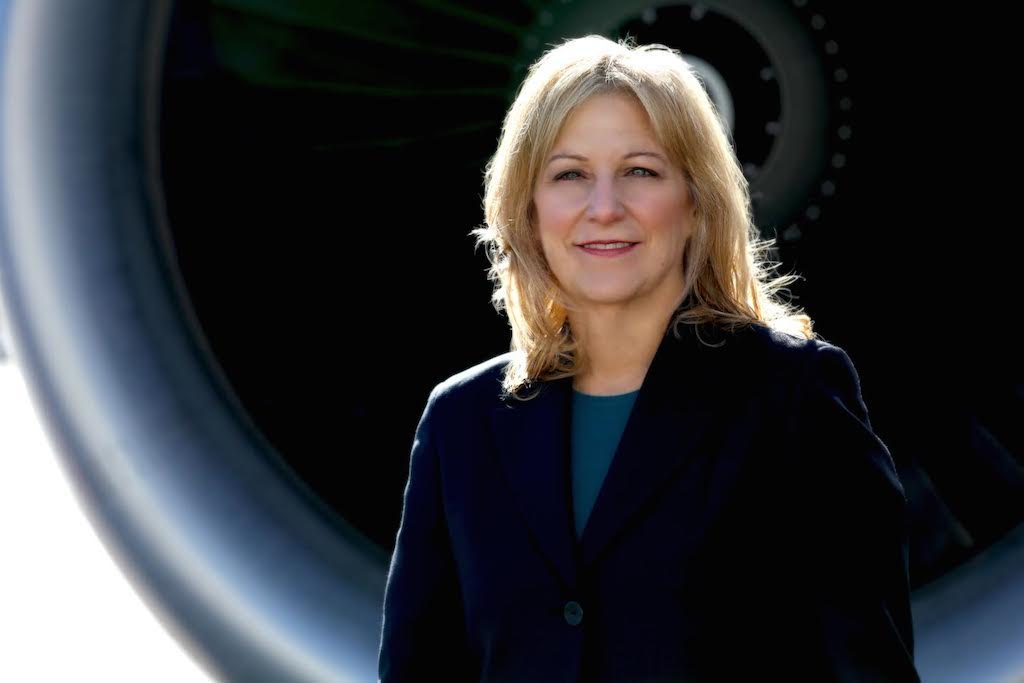Skift Take
Travelers want less human interaction with traditional airport processes but more culinary and cultural experiences to make their time in a terminal well spent. This isn't an easy equation to balance and Denver International Airport is one facility demonstrating it knows what the future holds for airports.
- Kim Day, CEO of Denver International Airport
- The Jeppesen Terminal at Denver International Airport.
Airline passengers are telling airports that they want less human interaction with processes like check-in and bag drop, but more experiences like fine dining and shopping that leave them feeling relaxed for their flights.
The challenge for airports is finding the happy medium and creating a customer service model that works for all passengers — tech savvy or not. Denver International Airport is situated in one of the fastest growing metropolitan areas in the U.S., as well as the country’s fastest growing tourism market, and this year celebrates the twentieth anniversary since it opened and replaced Stapleton International Airport in 1995. Last year more than 53 million passengers flew through the airport making it one of the world’s busiest.
Kim Day has been the airport’s CEO since 2008 and since then has helped put plans in motion for a new airport hotel and rail connection to downtown Denver. She was previously executive director of Los Angeles World Airports, the agency that manages Los Angeles International Airport and other L.A.-area airports and she also practiced architecture for more than 20 years.
Day will speak about building an airport for the future of travel at the Skift Global Forum on October 14 and 15 in Brooklyn, New York. Skift caught up with Day to learn more about what the airport is doing to improve the passenger experience in the digital age and why she thinks airports are all about experiences.
Skift: What kinds of smart technologies are you using that might inform the airport experience?
Kim Day: Technology that has been developed over the past ten to fifteen years has just totally changed how a passenger uses a terminal. For the technologically savvy customer the airport experience can be quite individual, it can be independent.
Wouldn’t it be great if you could get off the plane and we would recognize your phone? We send you an email saying “Hey, your next flight is four gates down on the right and actually if you turn to the left there’s a restaurant that’ll give you 10% off if you show them this email.”
We did a customer segmentation survey last year and found out that actually a lot of our customers don’t want to talk to a human being while they’re in the terminal. They want to be able to do everything through technology and we’re trying to listen to our customers and give them what they want. Because of this survey we’re going to be very targeted during the next few years in terms of how we reach different passengers. But we can’t make everybody happy nor do we have the resources to make everybody happy. We just want to make everything better for everyone.
I was just in Incheon Airport in Seoul, South Korea which is consistently rated by passengers as one of the best airport experiences in the world and the staff there said the secret is to get everyone in the airport on the same page whether it be the concessionaires or airport security or airlines. They all understood the vision and that’s what we want to do in Denver.
The reality is airport employees really have very little interface with passengers. It’s our concessionaires, it’s the TSA, unfortunately, and the airline employees who make contact with our customers. What we’re looking at doing is developing some sort of training so that we can influence how the concessionaires and the TSA and the taxi drivers handle passengers and create a very uniformed, welcoming experience.
This doesn’t necessarily require new technology but we are definitely using technology to improve the passenger experience. For example we have a new service now in which passengers can text us a question and we’ll text you back with an answer immediately. It’s not that it’s new technology so much as it is using existing technology in a more creative way and listening to our passengers.
Skift: How do you make an airport personal or unique through things like architecture and design?
Day: Airports today are trying to differentiate themselves so when you get off a plane in Denver we want you to know you’re in the Rocky Mountains and not Iowa. We have 300 days of sunlight here entering a facility that’s light and airy with a lot of local flavor. We’re going to give you local restaurants and experiences that you can have in the airport.
We’re talking about potentially developing some outdoor spaces post-security on the roofs of our concourses. Maybe there will be some fireplaces out there and you can experience being in the Rocky Mountains. One of the best outdoor airport facilities in the country right now is at LAX. They have this fabulous outdoor space in their international terminal where they have a fire pit and you have a view of the Santa Monica mountains and there’s a bar out there. You walk out there and you really don’t feel like you’re in an airport and that’s the feel we want to create in our airport.
So it’s about experiences coupled with “what do you need?” Do you need a place to board your pet because it’s open 24/7? We offer a pet hotel now. Should we offer a coat check so that if you’re going to the Caribbean in January you don’t have to lug your coat with you?
Skift: How else are you using your space that makes travelers excited about coming to the airport?
Day: The biggest thing is coming up. In November we’ll be opening up our brand new 519 room Westin Hotel which is about 200 feet from the edge of our terminal. The space between the hotel and the terminal is an outdoor plaza which is kind of like the one at Munich Airport. We are seeing that as an urban space at the airport where we plan to have concerts and art exhibits and car shows and all sorts of events. We see this as a great opportunity to bring people to the airport from downtown who aren’t even flying to have an experience, spend a little money and then take the train back into town, which will be starting next April.
Skift: Denver is one of the fastest growing metropolitan areas in the U.S. How are you keeping up with that growth and demand?
Day: We are so fortunate to have an airport that sits on 53 square miles of land. You could take LAX, Chicago O’Hare, Dallas/Fort Worth and Hartsfield-Jackson in Atlanta and put them in our property and you’d still have land leftover. We have a huge area and today we have six runways and have the land to grow to 12 runways and to double our terminal facilities, concourse and parking. We have a luxury to grow at a very low incremental cost when you compare us to airports on the coast so growth for us is cost effective. We also have the third strongest domestic network in this country and you can get to 160 cities in the U.S. nonstop from Denver.
Skift: How do you showcase your own brand while also showcasing the airlines and vendors that use your facility?
Day: Our social media I think has really helped to differentiate us from other airports and from our vendors. We use social media to talk about the conspiracy theories about our airport that are honestly part of our brand and people have liked that humor. These include alien testing and a new world order existing under our airport, you name it and it’s out there because when our airport was built it was kind of out in the middle of nowhere.
This is part of what we’ve become known for so instead of being serious all the time we’re using the conspiracy theories to help tell our story so that we seem more authentic and real to passengers. It’s really difficult for airlines with multiple terminals to have a unifying story but we don’t have multiple terminals. We have a single terminal that you come to and then go off to the different concourses and that’s a huge advantage for us in terms of establishing a brand. But I do think an airport like Munich which has two terminals has a really strong brand but those terminals are not airline branded. It just takes a little more effort with more than one terminal.
We realize that our story won’t make a difference whether someone chooses to connect through us but we do know that if we give our passengers a fun and productive experience they will use us as their connecting airport.
See the complete list of speakers and topics at the Skift Global Forum.
The Daily Newsletter
Our daily coverage of the global travel industry. Written by editors and analysts from across Skift’s brands.
Have a confidential tip for Skift? Get in touch
Tags: denver, sgf2015, skift global forum
Photo credit: Kim Day, CEO of Denver International Airport. Denver International Airport


